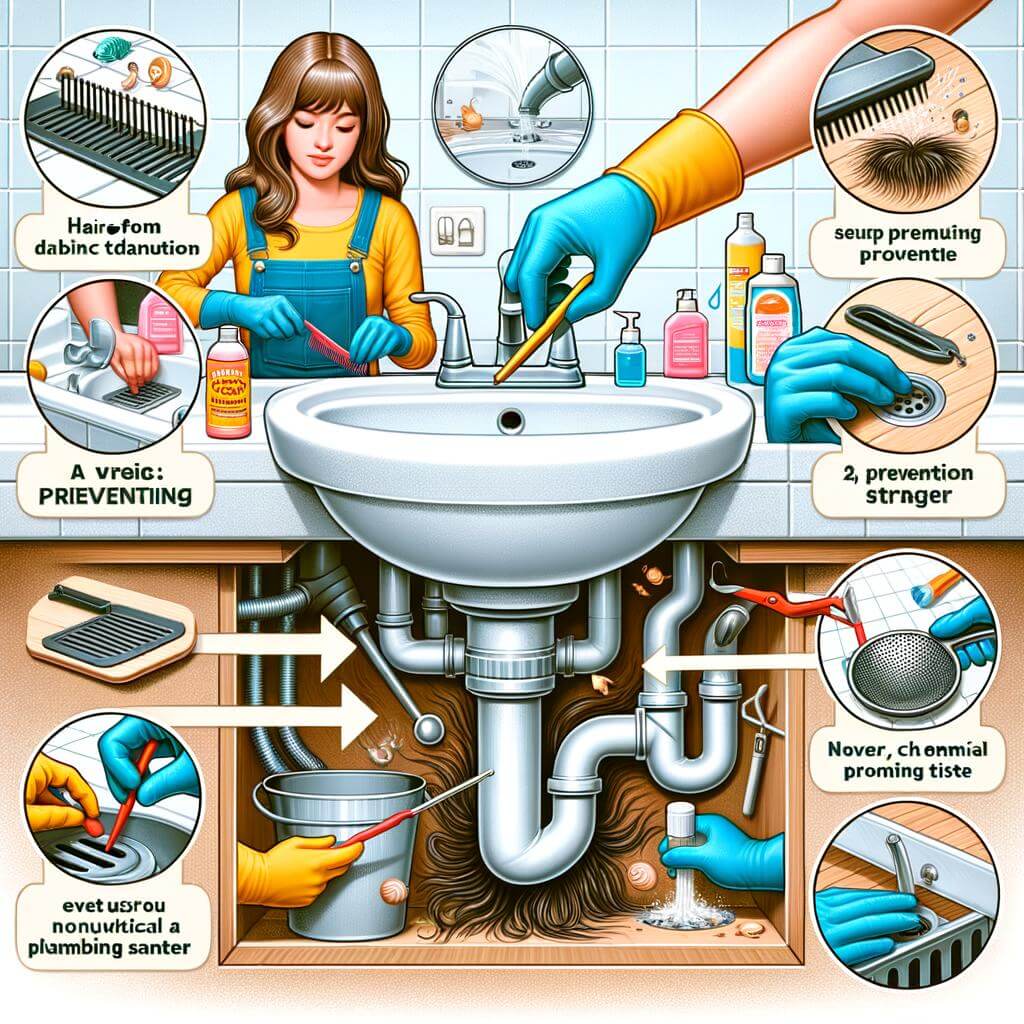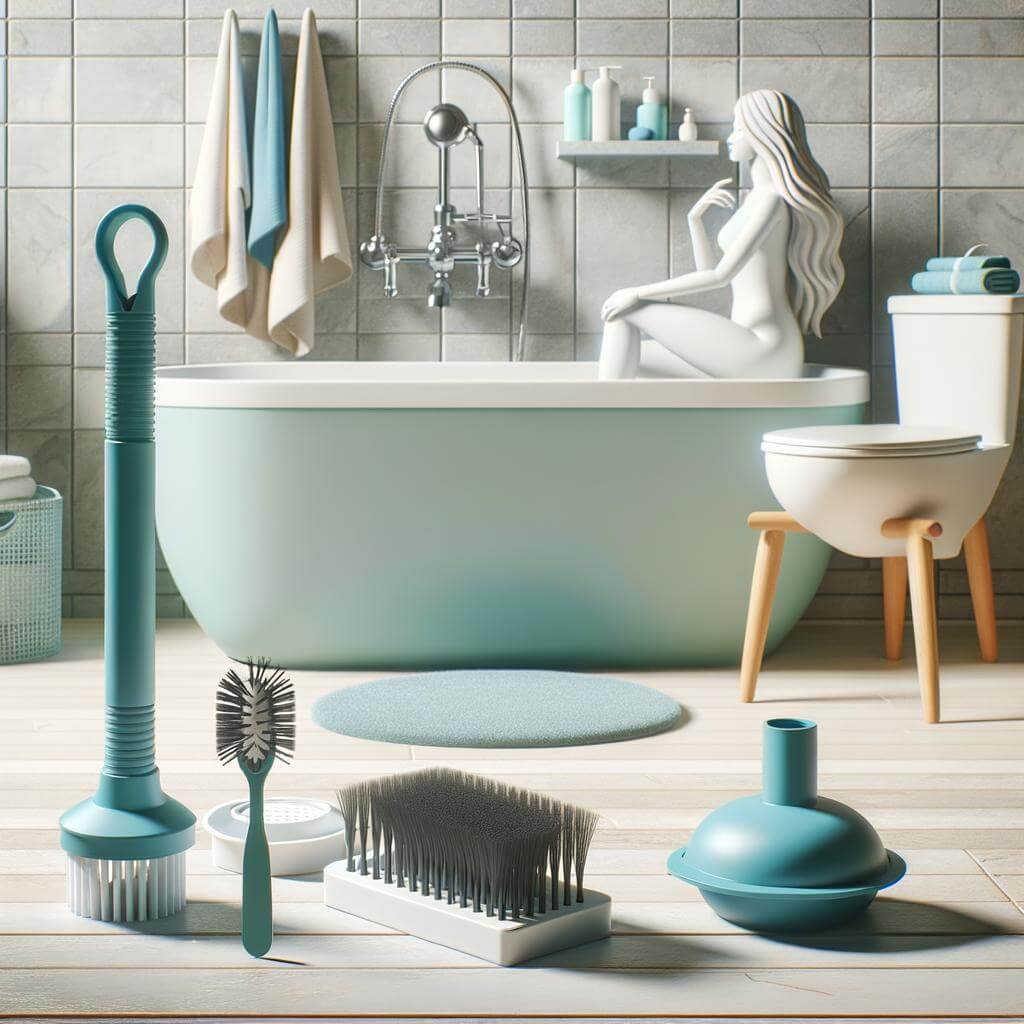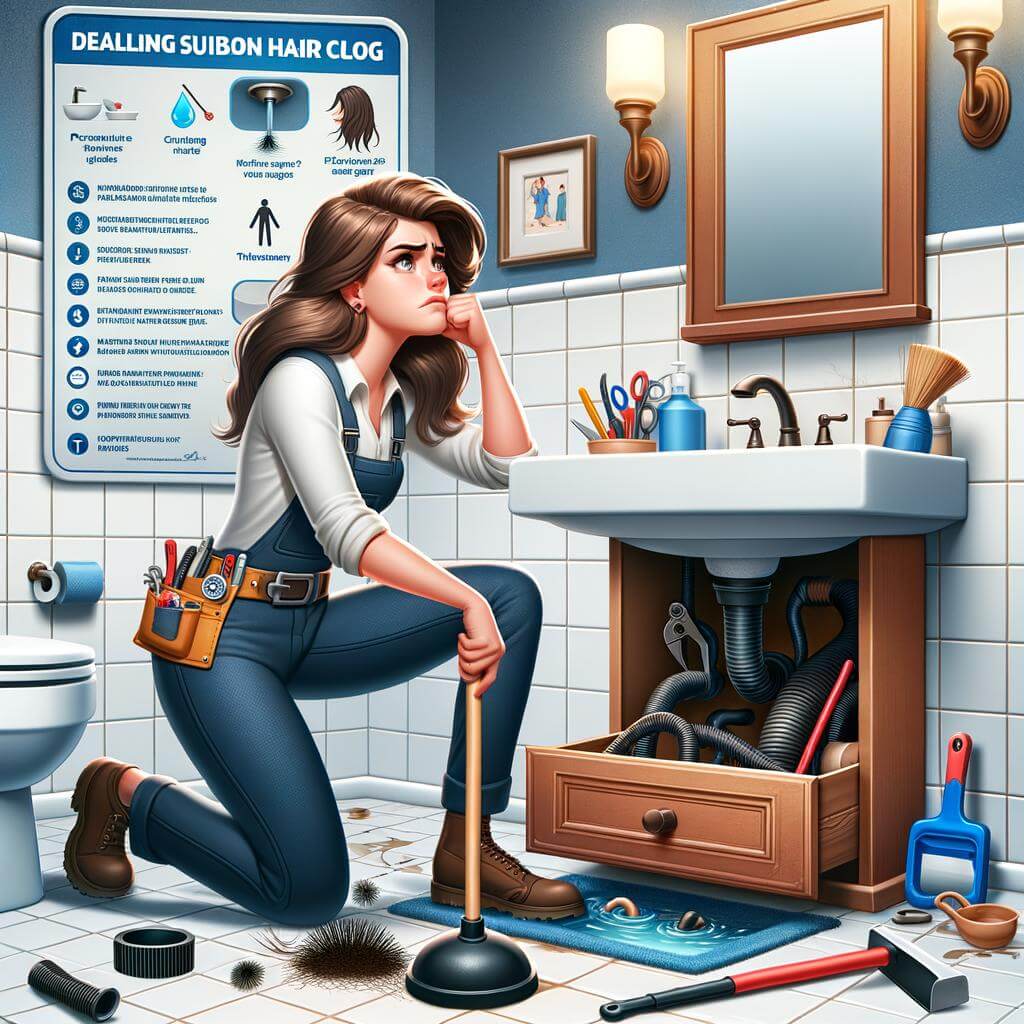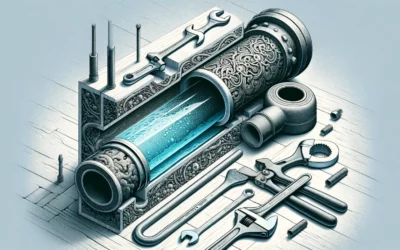Welcome to this detailed guide packed full with expert tips on preventing hair from clogging your drain easily. This post is going to be your ultimate roadmap to resolving one of the most persistent issues faced by homeowners. Enriched with professional insights and practical, easy-to-follow processes, this guide has been designed to enlighten you on the proper techniques of drain maintenance and hair clog prevention. Clearing hair clogs can be costly and stressful, but with the tips outlined in this guide, you’ll save time, effort, and money, keeping your drains clear and functioning efficiently. It’s about simplifying a complex problem with easy-to-understand and apply solutions. So, let’s dive in and become proficient in keeping your drains hair-free!
Understanding Why Hair Clogs Drains
Hair clogging your drain is no trivial matter and is more common than you might think. Hair’s unique structure and properties make it a prime candidate for drain blockages. Hair is thin and flexible which allows it to easily work its way into drains, but once inside, it can knot and tangle, forming a dense, stubborn clog. Worse yet, hair is hydrophilic, meaning it loves water. It absorbs water, swelling and becoming heavier, thereby adding to the mass of the clog.
To cope with this issue, there are easy and efficient steps you can follow. Invest in Drain strainers – these handy devices fit over your drain and catch hair before it enters the drain system. They are especially useful in showers or tubs where large amounts of hair could be washed down the drain. Regularly Clean Your Drains – make a habit of cleaning your drains at least once a month to remove any hair or debris that may be starting to build up. You can use a specially designed drain snake or a straightened wire hanger to pull out hair clogs.
| Action | Frequency | Benefits |
|---|---|---|
| Using drain strainers | Always, when you shower or in tubs | Prevenir hair from entering the drain system |
| Clean your drains | Once a month | Remove any hair or debris build up |
It’s always better to be proactive against hair clogs, which is why these tips focus on preventing the buildup of hair in your drains in the first place. With a simple routine and the right tools, you can help prevent drain clogs caused by hair, saving you from potential plumbing nightmares in the future.
General Causes of Hair Clogging
The first step in an effective hair clog prevention strategy is understanding its origins. Most commonly, hair clogs are a result of accumulated strands of hair that intertwine and form a blockage in your drains. This often happens in bathrooms, particularly in showers and bathtubs, where strands come loose during washing and brushing. Concurrently, oil and soap residuum can attach to the hair, leading to a denser and stickier mass. While occasional blockages are normal, if you notice your drain clogging more frequently, then it’s advised to take action.
Note: Aside from hair clogs caused by human members of the household, don’t forget to keep an eye on your furry friends. Pet hair can also contribute significantly to drain accumulation.
But the story doesn’t end with hair and soap. Another contributing factor is the presence of mineral build-up in your pipes. In regions with hard water, it is common for mineral deposits to form on the inner sides of pipes, which can naturally narrow the drainage space, consequently making it easier for hair to accumulate. Moreover, these mineral deposits can also bind with hair, forming a hard-to-remove blockage.
| Common Contributors to Hair Clogs | Solution |
| Loose strands from washing or brushing | Install hair catcher over drain |
| Oil and soap residues | Rinse thoroughly and use less oily products |
| Pet hair | Brush pets outside or in a non-drain area |
| Mineral build-up from hard water | Install a water softener system |
Remember, prevention is the best approach to hair clogs. By understanding the general causes, and adjusting your habits accordingly, maintaining clear drains will be a much lighter task.
Basic Plumbing Knowledge: How Hair Affects Your Drain
How Hair Interacts with Your Plumbing System
One major issue that can grapple with your home’s plumbing system is the buildup of hair. Whether it’s from shaving, washing, or even excessive shedding, hair can easily collect in the piping and subsequently lead to blockages. As strands of hair enmesh with grime, soap residue, and other small particles, these minor obstructions eventually evolve into more substantial, stubborn clogs. Besides slowing down water drainage, these blockages can exert undue pressure on the pipes, causing leaks and potentially costly water damage.
The problem typically becomes more accentuated in bathroom pipes where loose strands of hair are more likely to wash down. However, even small, seemingly insignificant strands that pass through your kitchen sink can pose problems. These strands can linger in the plumbing system, knotting with food particles and oil to form hard-to-get-rid-of blockades.
How to Prevent Hair from Clogging Your Drain
Your first line of defense against hair-induced drainage problems should be catching the hair before it enters the piping system. Incorporate drain filters in all the sinks in your home. These small yet incredibly effective tools can trap hair and other debris while allowing water to flow through.
Regular pipe cleaning is also essential. Use a mixture of hot water and vinegar or baking soda at least monthly, which serves to dissolve any minor blockages before they accumulate to form a significant clog. A professional drain snake can be used for heavier buildup.
| Preventative Measures | Tools Needed |
|---|---|
| Install Drain Filters | Drain filter, plumber’s putty |
| Regular Pipe Cleaning | Vinegar, baking soda, drain snake |
In sum, you need a two-pronged approach—active prevention and regular maintenance—to keep your drains flowing smoothly. A little extra effort now can save you from future headaches and costly plumbing repairs.

Preventing Hair from Clogging your Drain: Expert Strategies
If you’re tired of dealing with a slow-draining or clogged shower drain, here are some strategies that can help prevent these issues. The root cause of this common problem is usually hair. The more members in your household, the higher the chance of hair finding its way into your shower drain. But fear not, there are effective ways to prevent hair from clogging your drain.
One technique that is guaranteed to work is the use of a hair catcher. Hair catchers are available in various shapes and sizes to fit different types of drains. They are designed to allow water to flow smoothly while catching hair and debris that could potentially clog your drain. Another tip is to make it a habit to brush your hair before showering. The loose hairs will end up on your brush and not in your drain. Lastly, you could try using products that dissolve hair such as drain cleaners. Use cleaners sparingly and follow the product’s instructions meticulously to avoid causing harm to your pipes.
Furthermore, regular maintenance of your shower drain is key in preventing clogs. Take some time each week to scrub your drain and remove any hair or debris that might have found their way there. Consider integrating this into your weekly cleaning routine. Try boiling water down your drains on a monthly basis to help break down the biofilm and any other residue that could cause blockages.
| Strategies | Description |
|---|---|
| Use a hair catcher | A device that prevents hair from falling into the drain. |
| Brush your hair before showering | Loose hairs end up on your brush and not your drain. |
| Use drain cleaners | Products that dissolve hair in drains. |
| Regular drain maintenance | Make maintenance part of your weekly cleaning routine. |
| Boil water down your drains | Helps break down residue that could cause blockages. |
Remember, their effectiveness would also depend on several factors such as the amount of hair that falls into the drain, the type of drain, the pipe system, and more. Try different methods to see what works best for you.
Efficient Tools for Preventing Hair Clogs
There isn’t a home that hasn’t been faced with the dreaded hair-clog situation in the drain. It’s quite common, but no less frustrating. Instead of waiting for an unpleasant surprise that leads to discomfort and potentially expensive plumber visits, it’s much more practical to adopt a proactive approach. Here we suggest some efficient tools that are incredibly useful for preventing hair clogs:
- Drain Protector: Designed to act as the first line of defense, a drain protector is a simple yet efficient tool. They come as a standard feature in most bathtubs and showers and can be easily replaced if required. They catch hair before it manages to travel down the drain, but allow water to pass without hindrance.
- Hair Catcher: If you’re dealing with a pesky clog already or want an additional layer of protection, a hair catcher is a beneficial investment. It’s inserted into the drain, thus collecting every rogue hair strand while still allowing water to drain.
- Drain Snake: For a deeper clean, a drain snake is the perfect gadget. It’s a flexible device that can reach clogs even further down your drain, breaking them up and removing them.
- Plunger: Rightly considered a household essential, the versatile plunger can also aid in preventing hair clogs. Periodically using it can push any small hidden clogs further down before they become a bigger issue.
In addition to these tools, there are some other “household handy” ideas that can be pretty effective. A pop-up drain stopper may save your bathroom from severe clogging. This tool blocks the drain fully when in the closed position, thus preventing hair and other debris from entering the drain. You can also keep some proven DIY hacks up your sleeve, like the “baking soda and vinegar” trick.
| Tool | Function | Use |
|---|---|---|
| Pop-up Drain Stopper | Fully blocks drain | Prevent any hair or debris from entering the drain |
| Baking Soda & Vinegar | Natural cleaning agent | Creates a fizzing action that can dislodge and break up clogs |
In essence, the key to preventing hair clogs lies in a comprehensive approach that incorporates both strategic tools and smart home practices.

Maintaining a Clog-free Drain: Consistent Steps You Should Take
Drains often fall victim to inconvenient clogs, particularly due to hair build-up. It’s a universal issue that plagues many households. However, taking consistent, proactive steps can dramatically reduce and even eliminate this costly and time-consuming problem.
The first line of defense in maintaining a clog-free drain is preventing hair from going down it in the first place. Install a high-quality drain protector, ideally one specifically designed to trap hair. Strainers and stoppers can effectively prevent hair from washing down the drain. Regularly clearing these of trapped hair will ensure the water continues to flow freely. Besides, make it a habit to manually remove hair after showering or bathing, not letting it get down the drain.
- Regular Cleaning: Make a weekly routine of cleaning your drains, you can use a mixture of vinegar, baking soda, and hot water, a solution that breaks up minor clogs and maintains a smooth flowing drain.
- Use a Drain Snake: This tool is great to physically remove hair that’s built up in your pipes. Monthly use of a drain snake can drastically reduce clogs.
Investing time in weekly drain cleaning and maintenance can save you time, money, and the headache of dealing with stubborn hair clogs. It’s much easier to prevent a clog than to resolve one.
Finally, turn to professional help when necessary. Persistent clogs may indicate larger issues with your plumbing system that could require professional intervention. Regularly scheduled professional cleanings can also be a proactive step towards maintaining a clog-free drain.
| Action | Frequency |
|---|---|
| Clean Drain with Vinegar & Baking Soda | Weekly |
| Use Drain Snake | Monthly |
| Professional Drain Cleaning | Annually/As Needed |
- The table above provides a simple and efficient maintenance schedule to keep your drains flowing smoothly.

Professional Insights on Dealing with Persistent Hair Clogs
Everyone encounters the undesirable experience of getting hair clogged up in the drain. Not only does it result in a messy clean-up, but it also seems like a never-ending problem. But, did you know there are several methods to prevent persistent hair clogs? By taking proactive steps, you can limit the chances of your drain getting blocked frequently. Here is some expert advice on how to effectively manage and prevent hair from clogging your drains.
Firstly, invest in quality drain guards. When asked about an indispensable tool to combat hair clogs, many plumbing professionals will instantly utter the words “drain guard“. Drain guards or hair catchers are indeed a godsend as they catch hair and debris before it goes down the drain, preventing potential blockage.
| Cheap Solutions | Long-term Solutions |
|---|---|
| 1. Plastic drain snake | 1. Drain guard |
| 2. Natural drain cleaners | 2. Regular professional drain cleaning |
The second strategy involves regularly cleaning your drains, a process that can be simplified by using natural drain cleaners. Natural cleaners, such as a mix of vinegar and baking soda followed by hot water, have been proven to be effective in keeping drains free from persisting clogs. Regular drain cleaning is also an essential long-term approach that maintains the sanitary condition of the plumbing system while simultaneously preventing hair and other waste from building up.
Remember, an ounce of prevention is worth a pound of cure. Maintain a routine that considers the health of your drains. Regularly remove visible hair accumulation, use drain guards, clean drains regularly, and consider professional cleaning at least once a year. By integrating these steps into your home maintenance routine, getting rid of stubborn hair clogs will be a breeze.
Concluding Remarks
As we conclude this incredibly enlightening piece, it’s clear that being proactive is key when it comes to preventing hair clogs in your drains. These are not mind-boggling procedures but simple yet effective steps that, when taken consistently, will keep you from groaning under the stress of clogged drains and the costs that come with them. Remember, the tips provided here are not just random suggestions but expert advice formulated from years of experience and factual research. Our aim is to arm you with practical knowledge to keep your drains flowing smoothly. We hope you found this guide useful and encourage you to share the information with friends and family. After all, everyone deserves the peace of mind that comes with a clog-free home. Keep your drains clear, keep your showers stress-free!










